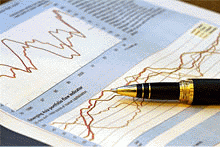

By Roger J Kerr
The QE2 and the G20 have come and gone, the markets are correctly re-focussing back on Europe’s sovereign debt problems and China is tightening monetary policy.
All these developments over the last week do suggest that the Kiwi’s spike from 0.7500 to 0.7990 will be short-lived and reversed as rapidly as it happened.
Already a stronger USD and weaker AUD have pulled the NZD back to 0.7730.
Global equity and commodity markets ran hard upwards ahead of the QE2 announcement, but now the global market environment and sentiment has changed abruptly over the past 10 days.
The most significant development is the tightening of monetary policy in China. They are worried about their general inflation and a few hotspots of property market bubbles.
Growing tenant vacancy rates for buildings in Beijing and Shanghai tells me that they have over-supplied the market and thus raw material demand (steel) will pull-back from the red hot rates of recent times.
The Chinese commodity importers will also be reluctant to pay the current high prices and will rely back on their inventory stockpiles. Add on to this equation the fact that the commercial lending banks in China have already reached their quota of loans made for the year and it sums to a higher cost of credit and a lower availability of credit in China.
The AUD/USD rate has already reversed from $1.0150 to 0.9870 on these Chinese developments and more AUD weakness could be in store.
The latest US, Chinese and European economic news is stimulating unwinding/profit-taking across the board in equity, commodity and currency markets after the gains over recent months. In addition, the time of year in the run-down to Christmas holiday periods also means a greater motivation for traders and hedge funds to square their speculative positions and take their profits.
I expect to see weaker investment and commodity markets over the next six weeks to Xmas as long positions are unwound.
It was anticipated that the focus would come back on Europe once the QE2 was known. The European sovereign debt situation has deteriorated further and the currency markets are selling the euro as Greek and Irish Government Bond credit spreads blow out yet again.
My view is that the European Central Bank (ECB) will be forced to cut their 1.00% official interest rates at some time over the next few months.
They need to stimulate consumer spending with lower interest rates to get their economies to recover to counter the tight fiscal austerity policies being adopted.
A cut by the ECB would surprise the markets and cause significant euro weakness against the USD; back to $1.2500 is my estimation. That 9% depreciation of the euro against the USD would pull the NZD/USD rate from the current 0.7750 to 0.7000.
The chart below confirms some key resistance and support lines for the euro against the USD. A break below $1.3300 in the EUR/USD rate suggests a rapid decline to $1.2500.

--------------------
* Roger J Kerr runs Asia Pacific Risk Management. He specialises in fixed interest securities and is a commentator on economics and markets. More commentary and useful information on fixed interest investing can be found at rogeradvice.com
No chart with that title exists.
1 Comments
"They need to stimulate consumer spending with lower interest rates to get their economies to recover to counter the tight fiscal austerity policies being adopted"....bollicks Roger...this Keynesian stupidity has to end.....try telling a German central banker they should make money cheaper because it will bring growth and wealth...where do you get these ideas from?.

We welcome your comments below. If you are not already registered, please register to comment.
Remember we welcome robust, respectful and insightful debate. We don't welcome abusive or defamatory comments and will de-register those repeatedly making such comments. Our current comment policy is here.